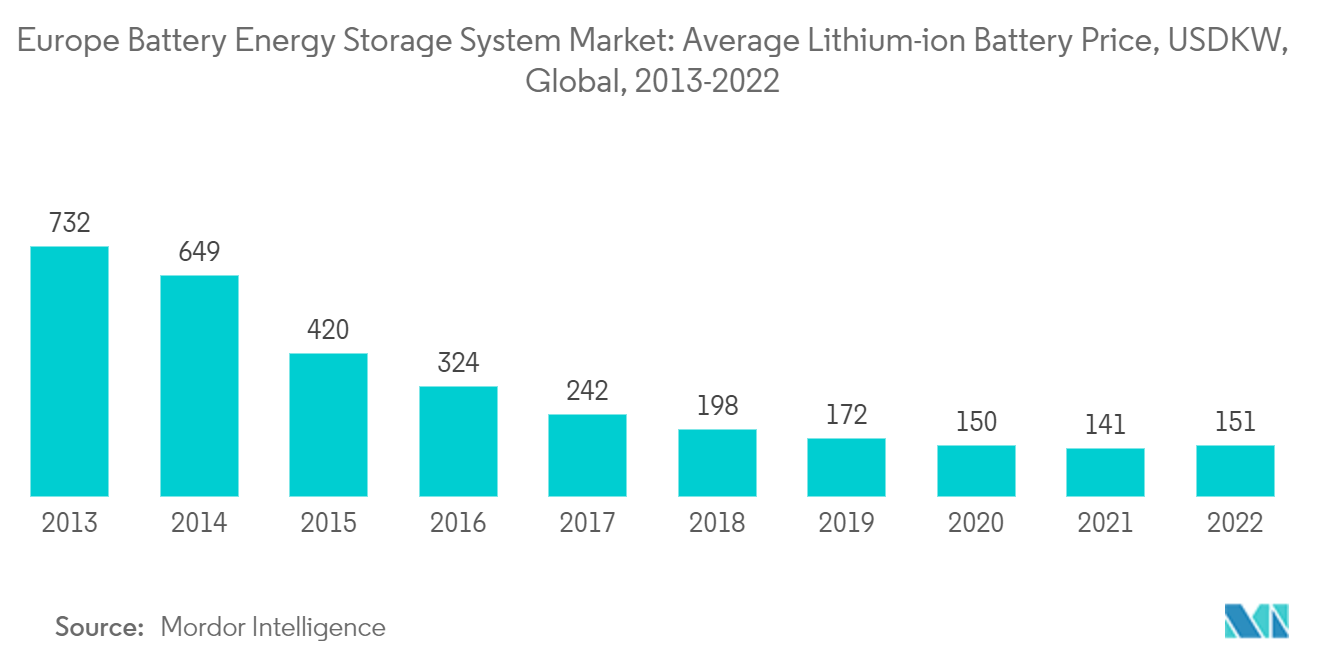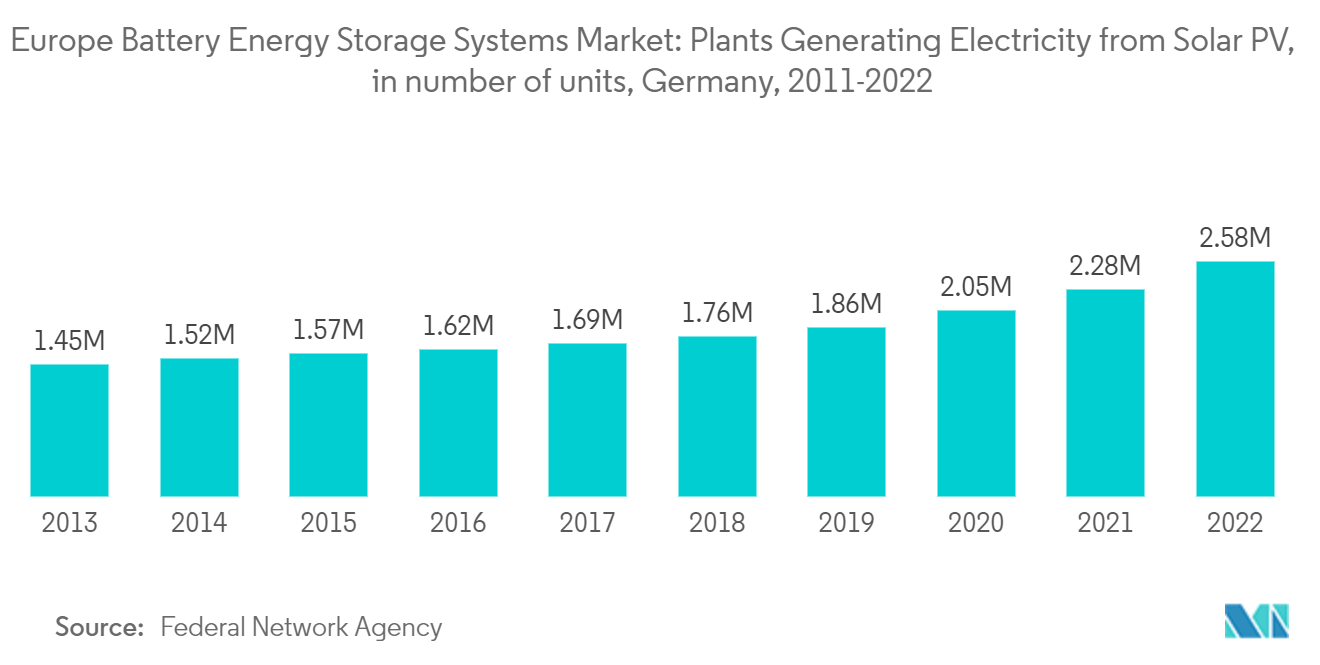Market Trends of Europe Battery Energy Storage System Industry
Lithium-ion Segment Expected to Dominate the Market
- Lithium-ion batteries are a rechargeable type of cell that is commonly used in electronic devices and energy vehicles. These batteries are also being used for renewable energy storage from sources such as solar and wind. The energy densities of these batteries are quite high, and they have a round-trip efficiency of 85% to 95%. The lithium-ion battery is a low-maintenance battery, and the cells of the battery cause little harm to the environment when disposed of.
- Further, the global lithium-ion battery manufacturers are focusing on reducing the cost of Li-ion batteries. The price of lithium-ion batteries declined steeply over the past ten years.
- However, in 2022, the battery prices had slightly increased to reach USD 151/KWh (witnessing a 7% increase over the previous year) owing to the increasing average battery pack prices of electric vehicles and energy storage systems. The prices are expected to reach USD 152/KWh in 2023; however, it is projected to dip again from 2024, when lithium prices are expected to ease as more extraction and refining capacity comes online and reaches USD 100/kWh by 2026.
- Lithium-ion batteries have significance in battery storage systems as they are used in solar, wind, and other battery energy storage systems. As per the REPowerEU plan, the region has planned to bring total renewable energy generation capacities to 1,236 GW by 2030. This is expected to create opportunities for battery energy storage systems as well.
- The installation of renewable energy is rising significantly in Europe, as the region has targeted becoming carbon neutral by 2050. For instance, the region installed around 41 GW of new solar capacity in 2022, which was 47% higher than the 28 GW added in 2021. Renewable energy sources such as solar, wind, geothermal, and others rely on lithium-ion batteries for energy storage systems.
- Moreover, countries in Europe have set targets to install renewable energy in their respective countries. With growing concerns regarding air pollution, many countries in the region have launched several policies and subsidies in the renewable energy market. As renewable energy is an intermittent energy source, the extra power generated by it can be stored in a battery storage system for later use. This is likely going to drive the market during the forecast period.
- Solar panels produce low-resistance charging, and lithium batteries require this. In addition, these batteries also charge quickly, which further allows the end users to maximize the potential energy storage of solar power for each minute of available sunlight.
- In October 2022, Nanotech Energy Europe BV announced that it signed a purchase agreement to supply more than 1 GWh of battery energy storage systems through 2028 to Smile Energy in Athens, Greece. This system would comprise Nanotech's graphene lithium-ion battery, and this project is crucial for Nanotech to expand its energy storage business in Greece for solar infrastructure.
- The adoption of Li-ion batteries has been increasing, primarily due to their property of being the most energetic rechargeable batteries available. In addition, the use of Li-ion batteries is increasing as they are replacing conventional batteries due to their techno-economic benefits.
- Hence, owing to the above points, the lithium-ion segment is likely to dominate the European battery energy storage system market during the forecast period.

Germany Expected to Dominate the Market
- According to the European Association of Energy Storage (EASE), Europe requires about 187 GW of energy storage by 2030, of which battery storage accounts for 122 GW of capacity. It signifies countries like Germany's rapid development of battery storage solutions to secure energy supplies to help overcome the after-effects of the Russia-Ukraine war-led energy crisis.
- Hence, with ambitious targets and a global trend to adopt a clean source of electricity, battery energy storage systems appear as a feasible option to power residential, commercial, and industrial (C&I) and utility-scale applications, enhancing renewable energy integration in the country.
- The federal government is making PV battery system investment very attractive by providing unique incentives, including low-interest loans and investment grants.
- For instance, the Government of Germany launched the KfW Renewable Energy Programme-Storage, which provides low-interest loans for stationary battery storage systems related to a PV installation. The investment addressed either setting up a new PV installation along with a battery storage system or only the financing of a battery storage system related to a PV installation that was put into operation after 2012. Only one storage system for each PV installation is eligible for the support scheme, and additionally, the PV installation, along with the battery storage system, is allowed to have an installed capacity of a maximum of 30 kWp.
- Moreover, with the increased decentralization of electrical systems such as rooftop solar energy in Germany, the installation of residential PV batteries has gained traction. Electricity utilities have devised attractive tariffs and service models, such as flat electricity rates for PV batteries. It facilitated the expansion of battery energy storage systems on the market.
- Therefore, such government initiatives are likely to increase demand for energy storage systems in Germany.


